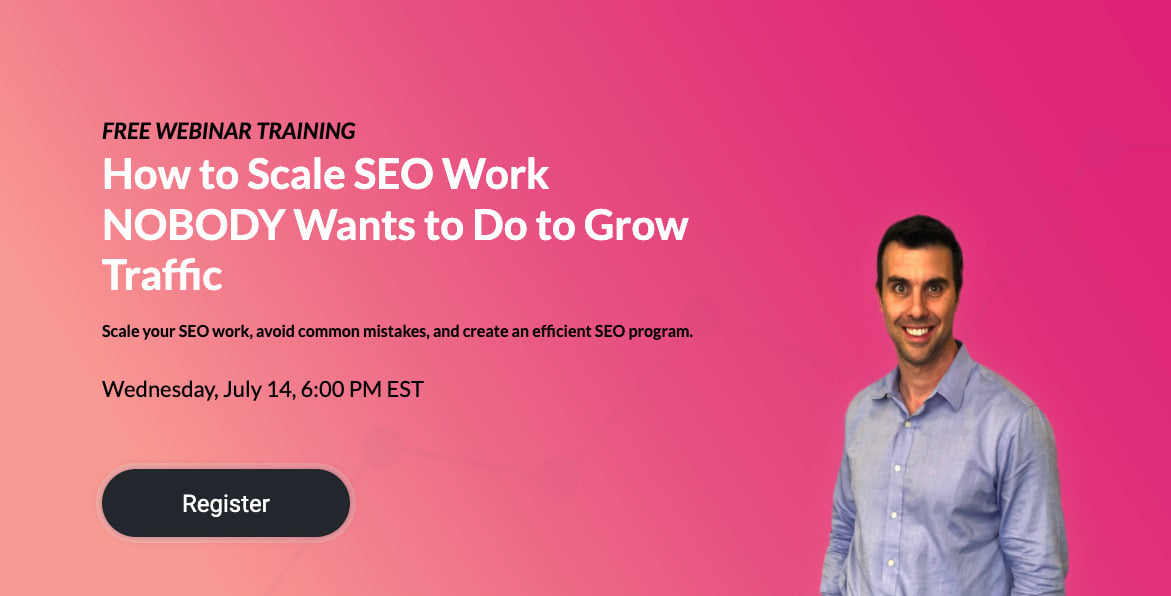This post on SEO Pagination was originally published in July 2014. It was last updated in May 2018.
In the previous entry in our series on SEO for eCommerce sites, we discussed the importance of minimizing duplicate content to increase visibility. Another important visibility factor many eCommerce pages overlook is pagination.
Pagination, in plain terms, is how your website deals with a product list or content that cannot comfortably fit on the customer’s screen. For example, an eCommerce brand might sell 250 different products under one category. Pagination breaks these down into digestible chunks and shows 10 pages with 25 items each.
While pagination might seem like an easy solution to large data sets, if it’s not implemented properly then it noticeably impacts the authority and SERP visibility those pages have. This guide will review the basics of pagination to help you use this tool to the best of its ability.
Pagination 101
Most Internet users likely experience SEO pagination every day without realizing it. While eCommerce pages use pagination to make their products scannable, other websites take advantage of this tool to organize large sites and break up content. A few instances where you will see pagination include:
- Long articles broken into multiple pages.
- Extensive lists organized into slideshows.
- Product options broken into multiple pages.
Pagination helps customers review the content, but it also creates better user experiences. With less content to load, site speed increases. The browsers are only trying to load limited parts of the content at a time, so customers can access your content faster and have a positive brand experience.
While SEO pagination seems like an easy concept, it can mess with your rankings if you’re not careful. You could end up creating multiple unrelated pages with similar content, that confuses crawlers and stalls your rankings. Check out https://web20ranker.com/google-maps-ranking-case-study/ for details.
The Canonical Solution
The first step that most developers take when considering SEO pagination is the rel=canonical tag. Ideally, the pages in a series would all point to the first part as the original, making sure this page gets the most eCommerce SEO value. However, this has lead to confusion in the SEO world. When building canonicals for series, developers were faced with two options:
- Should every canonical link point to the root page, regardless of the page in the series?
- Should the page have a self-canonical link pointing back to itself?
Google made it very clear: sequence pages should have self-canonical links. This prevents crawler confusion without damaging SEO.
Interestingly, canonical tagging isn’t the first trial-and-error method developers used for SEO pagination. Yoast reported that some search professionals added noindex tags to sequences in hopes that Google crawled all of the pages, but only listed the first one in the SERPs. However, in December 2017, Google announced that its crawlers would no longer follow long-term noindex pages. You could hurt your SEO and internal linking by preventing Google from seeing this content.
Using Rel=Next And Rel=Prev
One of the early ways web developers defined SEO pagination was with rel=next and rel=prev coding. Essentially, programmers had to specifically tell Google when there was a second page in the series and when readers could toggle back and forth between them. This particular SEO best practice dates back to September 2011 when Google discussed it on its official webmaster’s blog.
There are three steps that developers take to set up the pagination series:
- The root page points to the second page.
- <link rel=”next” href=”URL?page=2″/>
- The second page points back to the previous and to the next page. This continues through the series.
- <link rel=”prev” href=”URL”/>
- <link rel=”next” href=”URL?page=3″/>
- The final page uses the letter N to signify the end.
- <link rel=”prev” href=”URL?page=N”/>
This method is universally applicable. These tags also override Google’s default behavior of serving a view-all page if one exists. Instead, the search engine serves the most relevant page, usually the first page of the set.
While these tags might seem simple the first time you work with them, they can grow increasingly complex as your content evolves. Remember, your pages must form a chain. The code on every page needs to point back to the previous page and the next page in a cohesive line.
The View-All and Infinite Scrolling Solutions
While SEO pagination can help your load speed and improve the user experience, it isn’t the only option available to you. You can also develop your page to load as users scroll, or create a View-All option for longer lists.
In 2011, Google conducted user testing which revealed that users generally prefer that search results take them to a view-all page. Based on these results, Google’s crawlers were programmed to seek out view-all pages, and if detected, index these pages more prominently in the SERPs. If you don’t have a “view all” page constructed automatically within your system, then you should create one manually with the help of your IT team. You may need to develop canonical pages if you manually create a “view-all” page for your website, as search crawlers could flag the pages as duplicate content.
These insights stack up in 2018. Developers at Forge and Smith discovered that Internet users are conditioned to scroll. All of the top social media channels, from Twitter to Instagram and Pinterest, utilize infinite scrolling. Scrolling also increases time on site, as customers are less likely to bounce while a page loads. Furthermore, reaching the bottom of a page can signify a good stopping point for users, letting them know it’s time to leave your page.
While there are certainly instances where pagination is a better option than infinite scrolling, such as sharing a slideshow, more companies are turning to View-All and scrolling options to improve the user experience.
Final Thoughts on SEO Pagination
Ecommerce professionals know that maximizing crawl equity within a domain is key to growing SEO performance. Paginated sets of content are useful from both a site architecture and user experience perspective. However, without a strategic tagging plan to show that your content is part of the series, you may dilute the overall SEO value of your site.
Following one of the above solutions can help customers see your content as it was intended while solving any pagination issues your site may be experiencing.
To learn more about eCommerce SEO pagination and the value of this factor in your site performance, contact Trinity Insight and one of our SEO solution engineers will reach out to you soon.





